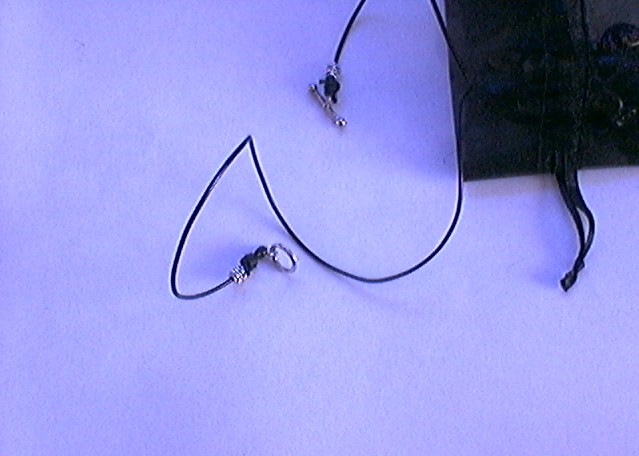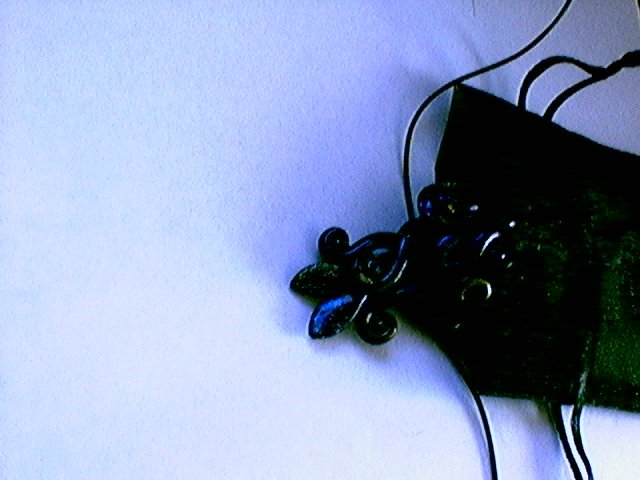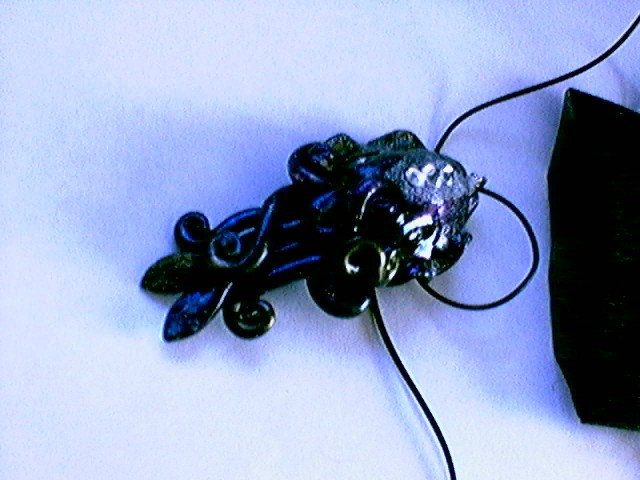|
December 9, 2009: Most biologists are familiar (and sometimes, for a brief time, all too familiar) with the vertebrates that make use of lures to entice unwary prey into their maw, such as the angler fish, the snapping turtle, and the water-horse or each uisige that once represented the dominant predatory check on the human and near-human populations of Eurasia. Scientific research into similar behaviour in invertebrates has been largely sidetracked, owing to the difficulty in obtaining reliable footage of the colonial sky-jelly or that cryptozoologist favourite, the False (or Heimer's) Condominium, the search for which has claimed countless lives since that first dread monograph was published in the Journal. It has often been suggested that the dwarf krakens of the continental shelves excersized a primitive cunning that is unobserved in their larger brethren due to a process similar to muscular atrophy. While the sheer physical strength of the deep-ocean kraken enables them to feed by brute force upon the teeming shoals of blue, green, and blue-green whales that our fertile oceans bring forth, and the demonstrated technological prowess of the swamp kraken leads to their being able to sustain themselves fully off the flesh of those degenerates whose ancestors were unlucky enough to be captured as breeding stock for their factory farms, the dwarf kraken is an anomaly. Much smaller than its brethren, the adults would need to hunt in packs to take down the larger whales - and unlike the swamp kraken, the dwarf kraken does not posess the industrial basis necessary to construct the disintegrating and enervating rays that have proven so devastating to lowland settlements. In modern zoology, the dwarf kraken has been an anomaly. It is a principle older than history that that which abides in a state of life must consume that it may survive, but our submersibles have failed to observe the feeding of the dwarf kraken, even when, in a not-inexpensive orgy of prudence, deepwater exploration craft were fitted with indigestible 'black boxes' similar to those used in dirigibles and aërodynes. We are indeed fortunate to have recovered these photographs, blurry though they are, from an expedition to the shallows of the White Sea, for they have contributed to filling in holes in our understanding of biology left by the natural, but regrettable, tendency of research institutes to focus their attention primarily on those organisms whose activities have proximate economic effect.
Above, you see what first enticed our submersible to descend towards the continental shelf in spite of the ever-present danger of infestation by trivalves burrowed into the pallid mire - long tendrils upon which were what could easily be mistaken for human artifacts, waving gently in the current. As we descended, the tendrils seemed to retreat in the current - an illusion which our skilled navigator was quick to reject, for the motion was almost perpendicular to the current against which our engines laboured. The dark patch captured the imagination of our gunners, whose educations, cut short by grueling combat training beginning in their early teens, were necessarily stunted in favour of more socially necessary traits. They began to make wagers on whether the dark patch would turn out to be a functioning Floridian machine, a localized area of pollution caused by a sunken nuclear liner, the long-rumoured Southwest Passage into the hollow Earth, permitting us to trade directly with the peoples of the core without the need for Antarctic intermediaries, or that perennial favourite amongst the military mind, Something That Will Try To Kill Us. I took the precaution of routing the fire control overrides through my console against the potential that that lattermost suspicion would lead to the premature destruction of something of scientific import. 
When I returned my attention from the necessary mundanities of expedition management to the scene outside, I was able to note a distinct change in the dark patch. The tendrils, with their possible artifacts, were curled up much closer to what I could now see was the maw of a cave - and there seemed a shadow cast from another source that our submersible's illumination at the entrance to this cavern! As I gave the order to stay course and approach no closer (a cheer and a groan indicated that that, too, had apparently been the subject of a wager amongst the gunnery crew), what had seemed at first a shadow flowed out of the cave with sinuous grace. It is no shame on my assistants that one of them whispered an entreaty for his continued survival to those gods that it has become our people's lot to tremble before, for the dwarf kraken lacks none of the majesty that her greater cousines display, and if her threat to humanity may be any less than that posed by the others, it owes solely to her choice of habitat leading to fewer encounters, and no weakness on her own part.
With the kraken's emergence, we were able to see that those tendrils which had first attracted our attention were in fact artifacts under her control, rather than a part of her body - a fact which explains the almost metallic gleam of the devices at their tip, and casts doubt on the assertions by some among our community that a land-based mode of existance is a necessary prerequisite for the development of metallurgy. In fairness, the reader should be aware that the student whose involuntary entreaty broke the silence within the submarine has advanced a quite logically sound argument for the position that the metallic artifacts were acquired through trade or through the subjugation of a heretofore-unknown land-based or boat-dwelling race of servitors; while this hypothesis would explain certain anomalous observations, it is our opinion that accepting it at this time would be premature, and much more observation is needed before the economic hypothesis could be accepted into the hallowed body of accepted theory or consigned to the dustbin of history with so many other leaps of insight that proved to be mere errors of the digestive process.
We conclude with the last picture taken before prudence dictated that we withdraw from the area. The shifting patterns of colour that have so far eluded the clear understanding of our linguists are clearly displayed, as is the shameful fact that, despite the existance of a zoological tradition dating back to before the most recent Fall, we still do not understand the function of the great jewel-like nodules that are found upon the bodies of the aquatic genera of kraken. Are they mnemonic organs as popular myth would have? Are they naturally occuring gemstones prised from the seabed and implanted in the body for decorative, religious, or functional purposes - or for some reason that our minds are inherently incapable of comprehending even in the merest approximation? It is all the more humbling to be reminded that even when we meet the kraken not as surface vermin, nor as livestock in the factory-farm warren, but as two beings from vastly different habitats passing fitfully in the depths, we still understand little more of their nature and purpose than we did in the darkest days of the millenial interregnum. |
||||


